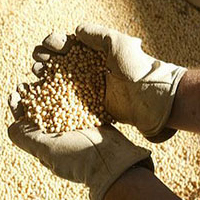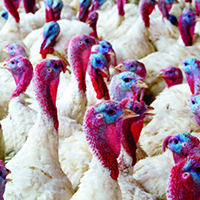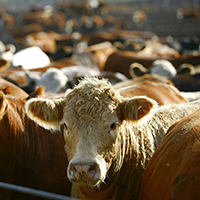A snapshot of market forces and current expectations, excerpted from our third quarter financial results for 2015:
 The margin outlook for most crop producers continues to look challenging for the next several years with most forecasters projecting corn and soybean prices to be at or near break-even levels for the average producer. Yields for producers in the Western Corn Belt appear to be above average for most of the crop acres in our territory.
The margin outlook for most crop producers continues to look challenging for the next several years with most forecasters projecting corn and soybean prices to be at or near break-even levels for the average producer. Yields for producers in the Western Corn Belt appear to be above average for most of the crop acres in our territory.
 The Avian flu that hit the egg and turkey industries in the second quarter resulted in the death or depopulation of approximately 35 million Midwest egg laying hens, decreasing average monthly hen inventories from 300 million in April to 269 million in June, the lowest inventory level in over 10 years. There have been no further outbreaks in 2015 and adversely impacted egg and turkey producers have begun repopulating inventories. However, the potential resurgence of HPAI in the fall from migratory birds returning south represents a risk to the poultry industry in the United States, prompting producers to make bio-security improvements and review potential vaccination strategies. Based on low egg layer inventories, delayed repopulation at HPAI infected sites and seasonal holiday demand, egg and turkey prices are expected to remain high through 2015.
The Avian flu that hit the egg and turkey industries in the second quarter resulted in the death or depopulation of approximately 35 million Midwest egg laying hens, decreasing average monthly hen inventories from 300 million in April to 269 million in June, the lowest inventory level in over 10 years. There have been no further outbreaks in 2015 and adversely impacted egg and turkey producers have begun repopulating inventories. However, the potential resurgence of HPAI in the fall from migratory birds returning south represents a risk to the poultry industry in the United States, prompting producers to make bio-security improvements and review potential vaccination strategies. Based on low egg layer inventories, delayed repopulation at HPAI infected sites and seasonal holiday demand, egg and turkey prices are expected to remain high through 2015.
 During the third quarter of 2015, fed cattle prices declined by $30 per cwt., which represents an approximate 20 percent decline. Feeder cattle prices also declined by $40 to $60 per cwt., a similar percentage decline. This market movement was caused by a larger supply of beef as demand has declined and supply increased. Contributing factors included large numbers of market ready cattle at very heavy weights, competing proteins at lower prices, and a decline in exports related to a strong U.S. dollar. This cattle price decline will result in lower profits for calf producers compared to a year ago, but most calf producers will remain profitable. Cattle feeders will likely experience losses on current inventories that were not covered by contracts or other risk management strategies. In the case of both calf producers and cattle feeders, most producers experienced exceptional profits during 2014 and have retained significant risk bearing capacity going into this market correction.
During the third quarter of 2015, fed cattle prices declined by $30 per cwt., which represents an approximate 20 percent decline. Feeder cattle prices also declined by $40 to $60 per cwt., a similar percentage decline. This market movement was caused by a larger supply of beef as demand has declined and supply increased. Contributing factors included large numbers of market ready cattle at very heavy weights, competing proteins at lower prices, and a decline in exports related to a strong U.S. dollar. This cattle price decline will result in lower profits for calf producers compared to a year ago, but most calf producers will remain profitable. Cattle feeders will likely experience losses on current inventories that were not covered by contracts or other risk management strategies. In the case of both calf producers and cattle feeders, most producers experienced exceptional profits during 2014 and have retained significant risk bearing capacity going into this market correction.
 Land prices and demand for farmland have moderated in our territory. Reduced commodity prices compared to previous years has led to some uncertainty and 2015 harvest results could play a key role in future land market values. Lower commodity prices and decreased margins are putting pressure on cash rents and overall land prices.
Land prices and demand for farmland have moderated in our territory. Reduced commodity prices compared to previous years has led to some uncertainty and 2015 harvest results could play a key role in future land market values. Lower commodity prices and decreased margins are putting pressure on cash rents and overall land prices.
Click to view full Q3 financial report.
Note: As stated in our third quarter financial report for 2015, current expectations are subject to uncertainty and changes in circumstances. Actual results may differ materially from expectations due to a number of risks and uncertainties.

